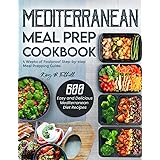Unlocking Sustainable Weight Loss: It’s Easier Than You Think
Are you among the many who believe that losing weight is a constant uphill battle, requiring extreme dedication to diet and exercise? It is often believed that significant transformations require a near-perfect regimen. However, as the video above suggests, the real secret to achieving and maintaining your ideal weight might be simpler and more accessible than previously imagined. This guide expands on the video’s insights, offering practical strategies to make your weight loss journey not just effective, but genuinely easy to integrate into your daily life.
Beyond Diet and Exercise: The Full Picture of Fat Loss
While nutrition and physical activity are undeniably important components of weight management, they represent only a fraction of the full equation. It is commonly thought that diet and exercise together make up about half of the effort. Conversely, the video highlights that these two elements often contribute closer to 25% of the success. An equally crucial 25% is attributed to getting good quality sleep, a factor frequently overlooked.
The remaining, and arguably most impactful, portion of the journey—emphasized with a playful hyperbole of 500% in the video—is your consistent commitment. This commitment involves “actually doing what you said you would.” Without a strong dedication to follow through, even the best diet and exercise plans can falter. Therefore, a holistic approach considering mindset, sleep, nutrition, and movement is truly essential for sustainable results.
Building an Unbreakable Foundation: Goals, Plans, and Habits
Starting a weight loss journey can feel daunting, but it becomes almost impossible to fail when a strategic approach is adopted. The initial spark, that moment of inspiration, often comes from seeing others who are fit or noticing changes in your own reflection. However, this powerful motivation is typically short-lived, often fading after just a day.
Setting Realistic and Measurable Goals
Instead of relying solely on fleeting inspiration, the next step involves setting realistic, measurable goals with clear deadlines. For example, a goal such as “losing 5 lbs (2.3 kg) by July 1st and another 5 lbs by August 1st” provides a quantifiable target and a checkpoint to maintain motivation. This structured approach allows for progress tracking and adjustments as needed. Vague aspirations, by contrast, are difficult to work towards and rarely yield lasting results.
Crafting a Detailed and Realistic Plan
Once a goal is established, a detailed plan is needed to guide the way. This plan should outline the specific actions that will lead to the desired outcome. For instance, replacing a high-calorie breakfast like sugary granola with milk and a peanut butter and jelly sandwich, with a one-mile jog followed by a bowl of strawberries and three boiled eggs, can be a transformative change. This seemingly small adjustment is frequently enough to result in multiple pounds of fat loss over several weeks, demonstrating the power of consistent, mindful swaps.
Making Healthy Choices Inevitable
Having a plan is one thing; consistently following it is another. To make adherence easy, it is imperative to set up your environment for success. This might involve boiling eggs and preparing running clothes the night before, ensuring that healthy options are the easiest to reach for in the morning. Conversely, if high-calorie foods like peanut butter and grape jelly are kept front and center in the fridge, giving in to temptation becomes much more likely. The principle here is clear: make it simple to eat healthy, and make it challenging to access junk food.
Cultivating Willpower and Anticipating Challenges
Despite best intentions and careful planning, hard times are inevitable. Temptations arise, whether from a chance encounter with a high-calorie menu or simply a moment of weakness. It is during these times that willpower is crucial—the ability to say no to immediate gratification. Willpower can be strengthened by anticipating common excuses, such as “one cheat meal won’t hurt,” or “I’ll start dieting tomorrow.” Practicing a firm “no” to these internal dialogues can build resilience. However, it is important to remember that willpower is not an infinite resource; it can be depleted. Therefore, avoiding tempting situations altogether is often a more effective long-term strategy than relying solely on mental fortitude.
The Power of Habit Formation
The ultimate “cheat code” for motivation and sustained weight loss is turning healthy actions into automatic habits. When exercising and eating nutritious foods become second nature, the plan becomes significantly easier to follow. Waking up and automatically going for a jog, or instinctively reaching for healthy breakfast options, transforms the journey from a conscious effort into an ingrained part of your lifestyle. Over time, these habits are not just maintained; they can become genuinely enjoyable, embedding healthy living into your very identity.
Tracking Progress and Understanding Calorie Deficits
Effective weight loss relies on consistent progress tracking. While visual changes may not be immediately apparent—as the body often prioritizes fat loss from less visible areas first—regular check-ins are vital. Progress pictures can reveal subtle shifts over time, but weighing yourself weekly provides a more objective measure.
Navigating Weight Fluctuations
Daily weigh-ins can be misleading due to fluctuations from water retention or food intake. For example, a pound of fat might be lost, but the scale may not reflect this immediately. Therefore, focusing on week-to-week averages offers a clearer picture of your overall trajectory. This longer-term view helps to mitigate discouragement from minor daily variations, allowing for a more accurate assessment of your efforts.
The Calorie Deficit Principle
At the core of fat loss is the principle of a calorie deficit: consuming fewer calories than your body burns. If, for instance, your body expends 2,000 calories daily, eating 1,700 calories creates a 300-calorie deficit. This forces the body to draw energy from stored fat and a small amount of muscle to cover the difference. While larger deficits (e.g., eating 1,200-1,500 calories) can accelerate fat loss, they are significantly harder to maintain and can be detrimental to overall health and sustainability. A moderate, consistent deficit is generally preferred for long-term success.
Estimating Calorie Needs and Adjusting
Online calorie calculators provide a useful starting point for estimating daily calorie intake based on factors like age, sex, weight, and activity level. However, these are approximations, and individual metabolisms vary significantly, especially for those with hormonal imbalances. The best approach is to begin with the calculated number and monitor your weight over a few weeks. If no weight change is observed, a reduction of 200-300 calories per day is often necessary. Alternatively, incorporating more exercise can also help deepen the calorie deficit, offering flexibility in your approach.
To Count or Not to Count Calories?
For those who prefer precision, exact calorie counting involves using nutrition labels, calorie-counting apps, and food scales. This method provides the most accurate data but can be time-consuming. However, rough estimation can also be effective if a conservative approach is taken. It is generally advisable to round up calorie counts significantly (e.g., if you think it’s 300 calories, assume 500) to ensure a deficit is truly being created. This cautious estimation helps prevent accidental overconsumption.
The Role of Macronutrients and Smart Food Choices
When considering nutrition for weight loss, the primary focus is often placed on total calories and protein intake. Protein is crucial because it promotes satiety and requires more energy to digest than carbohydrates or fats. Once adequate protein and essential fats are consumed, the remaining calorie allowance can be filled with a variety of foods.
Understanding Fats and Carbs
While healthy fats are vital, moderation is key due to their high caloric density (9 calories per gram). Overconsumption of foods rich in healthy fats like oils, sauces, salad dressings, butter, nuts, and cheese can easily lead to exceeding calorie goals. For example, a single pack of trail mix can contain surprisingly high calories. Similarly, when “carbs cause weight gain” is mentioned by experts, the reference is typically to refined, highly processed carbohydrates with added sugars, not whole foods like fruits, vegetables, fiber, and whole grains. These refined carbs are often “unnaturally delicious,” easy to overeat, calorie-dense, and paradoxically, can make you feel hungrier later.
It is certainly possible to lose weight while including these foods, provided a calorie deficit is maintained. However, filling your diet with minimally processed foods like fruits, vegetables, lean dairy, lean protein, healthy fats, and whole grains makes calorie deficit easier to achieve without constant hunger. These foods are naturally filling and nutrient-dense, helping to manage appetite more effectively.
Simplified Fat Loss Strategies: Beyond Calorie Counting
For those who find calorie counting cumbersome, effective weight loss can still be achieved through strategic, mindful eating. The number one trick is a gradual shift towards more minimally processed foods, avoiding junk, chips, sugary desserts, and highly refined carbs.
Practical Tips for Effortless Weight Loss
Several strategies can make losing fat without strict tracking much simpler:
- Hydrate Abundantly: Drinking plenty of water is incredibly filling, and often, what feels like hunger is actually thirst. Keeping a large water bottle nearby encourages consistent hydration and helps curb cravings for high-calorie beverages like soda, juice, or milkshakes.
- Eliminate Snacking: Most snacking occurs due to boredom, stress, or thirst, rather than true hunger. Cutting out snacks can be one of the easiest changes to make, as the body typically does not require them. Over time, the urge to snack tends to diminish naturally.
- Avoid Liquid Calories: Calories consumed in liquid form (e.g., sugary drinks) are less satiating than solid foods, making it easy to consume a large number without feeling full. Opting for water or unsweetened beverages is a simple yet impactful change.
- Smart Swaps: Incorporate low-calorie alternatives like low-fat shredded cheese, keto bread, cauliflower rice, egg whites, or peanut butter powder into your meals. These substitutions can significantly reduce calorie intake without sacrificing flavor or volume.
- Flavor Enhancers: Utilize zero-calorie condiments, spices, sauces, and sweeteners to make healthy meals more palatable. However, it is wise not to overuse them, as overly tasty food can sometimes amplify cravings for more rich flavors.
- Diet Sodas for Cravings: For those with a sweet tooth, zero-calorie diet sodas can be a useful tool to manage cravings without adding calories.
- High-Volume, High-Fiber Foods: Prioritize foods that fill the stomach with minimal calories, such as most vegetables, fruits, and lean proteins. These foods are excellent for promoting satiety.
- Strategic Meal Timing: Eating three to five meals a day can prevent long periods of intense hunger, making it easier to stick to a calorie deficit. While one large meal a day (OMAD) works for some, it is often difficult to sustain. Saving larger meals for when hunger is typically strongest can also be beneficial.
- Intermittent Fasting: Many individuals find intermittent fasting helpful for maintaining a calorie deficit. This involves restricting eating to a 4- to 8-hour window each day, with the understanding that hunger comes in waves and will eventually subside.
- Boost Protein Intake: Protein not only provides satisfaction but also has a higher thermic effect, meaning more calories are burned during its digestion. Approximately 20 calories are expended to digest every 100 calories of protein consumed. While protein powder can help meet requirements, whole food sources are generally more filling.
- Black Coffee or Tea: Caffeine found in black coffee or tea can slightly boost metabolism and suppress appetite, offering a minor advantage in managing hunger.
- Portion Control with Plate Size: Using smaller plates, bowls, and portion sizes can psychologically trick the mind into feeling full more quickly, helping to manage intake without strict counting.
- Resilience After Slip-Ups: If a mistake is made, it should not be viewed as an excuse to abandon the entire plan. Messing up is part of the journey; giving up should never be. Getting back on track immediately is key.
Incorporating Exercise for Enhanced Results
Exercise is not only a calorie burner but also a powerful tool for improving overall health and metabolism. The physical effort required to burn a certain number of calories through exercise can also act as a deterrent, making one less likely to consume an equivalent amount of calories in junk food.
Effective Exercise Strategies
To maximize the benefits of exercise for fat loss and health:
- Lift Weights: Strength training builds muscle, which not only increases your resting metabolism but also burns calories during the workout itself. Resources are available online for exercise ideas tailored to your goals.
- Walk More: Aiming for at least 10,000 steps daily is an accessible way to significantly boost calorie expenditure and contribute to fat loss. Walking is low-impact and easily integrated into most lifestyles.
- Engage in Cardio: While diet is paramount for fat loss, cardiovascular exercise makes the process easier. If traditional cardio feels boring, consider high-intensity interval training (HIIT) or circuit-style workouts, which can be found in abundance on platforms like YouTube.
- Reduce Sedentary Behavior: Simply moving more throughout the day—beyond structured workouts—burns a surprising number of calories. This Non-Exercise Activity Thermogenesis (NEAT) includes activities like taking the stairs, cleaning, cooking, fidgeting, standing, and carrying groceries. Essentially, any activity that avoids prolonged sitting or lying down contributes positively to your calorie burn.
The Often-Underestimated Power of Quality Sleep
A frequently overlooked but critically important factor in successful weight loss is good quality sleep. Sleep plays a fundamental role in regulating hormones, which in turn dictate nearly every aspect of fat loss. When sleep is insufficient or poor, hormones like ghrelin (which stimulates appetite) and leptin (which signals fullness) can become imbalanced, leading to increased cravings and difficulty managing hunger. Furthermore, sleep deprivation can elevate cortisol levels, promoting fat storage, particularly around the midsection. Prioritizing consistent, restorative sleep is thus a non-negotiable component of any effective and sustainable weight loss strategy, ensuring that your body’s internal systems are optimized for success.











